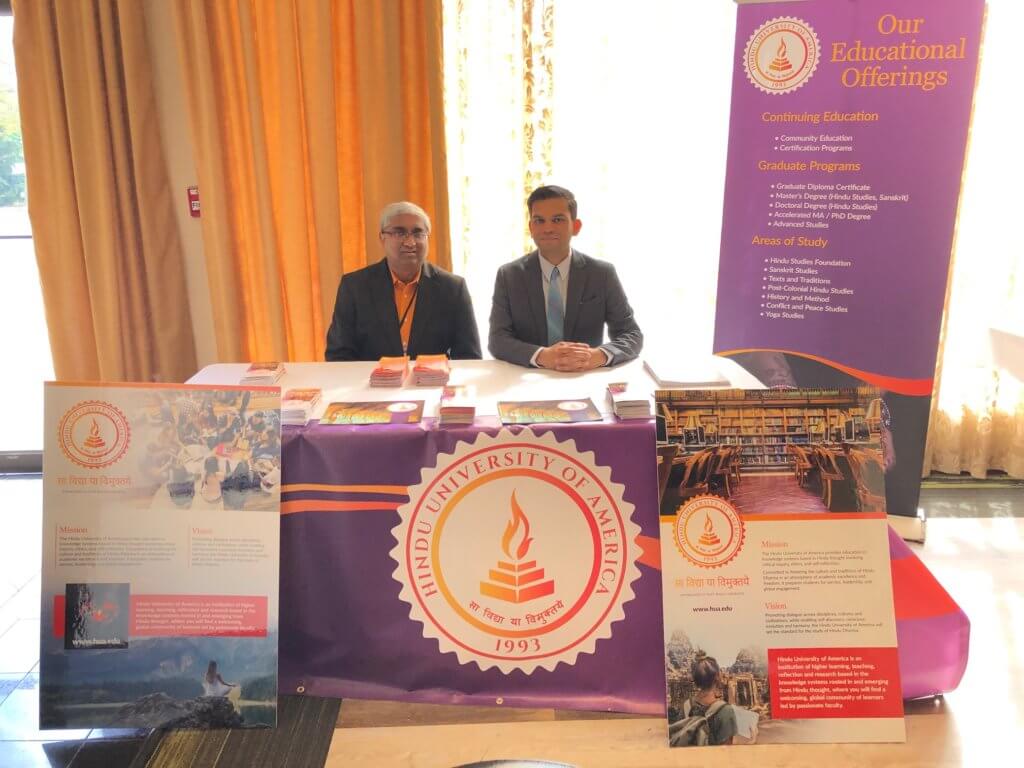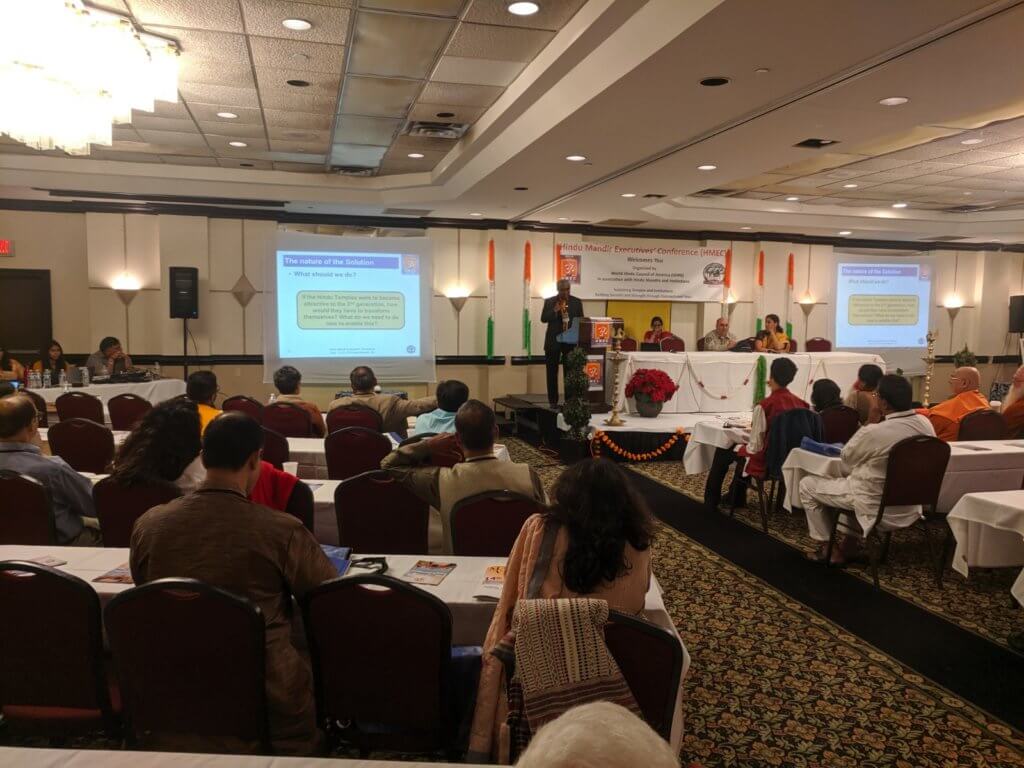HUA@2019 Hindu Mandir Executive Conference
The 14th annual Hindu Mandir Executive Conference was held in New Jersey between September 20th and 22nd. Hindu University of America set up a booth and had a range of productive conversations with the attendees.

On the 2nd day of the conference, Interim President of HUA Kalyan Viswanathan spoke on a panel with a focus on sustaining our Hindu traditions, culture and identity here in America. In his talk, he addressed the relevance of Hindu mandirs for the younger generation, born and raised here in the US, especially in the age group 18 through 35. When he asked a question of the audience, “What percentage of Hindu youth in that age group actively participate in the Hindu Mandirs?”, the audience agreed that it was probably less than 10%. Whichever way we look at it, the attrition rate is severe with fewer members of the next generation participating at their Mandir. When he asked, “How much time do Mandir Board Members and Executive Committees” spend on developing strategies to engage young people, in that age group, one member of the audience responded, “Can we say below zero?”

Mandirs are being sustained largely by the devotion and commitment of first-generation Hindus – which brings up the question – How do we sustain our Hindu culture and world view in the United States if the mandir, which is such a critical infrastructure for us, becomes increasingly irrelevant for the younger generation? What are the root causes for this attrition, how can we address them, and what do mandirs need to do to remain relevant to the next generation? These were the questions that Shri Kalyan Viswanathan raised on the panel on sustainability at the Hindu Mandir Executive Conference. There was consensus in the room that while most Hindu children do participate in the Hindu Mandirs as long as they are in school if their parents do so consistently, there is a dramatic shift away from the Mandir when these kids go to college.
Can Hindu University of America engage in mutually beneficial relationships with Hindu Mandirs across the country? Mandirs already serve as community centers, but what if we took that to the next level and mandirs partnered with HUA to serve as places where university-level courses, graduate programs, and advanced studies could take place? Mandirs can be sponsors of scholarship and establish professorships and take an active role in the development of the university if they choose to do so. After all, if we look at Jesuit institutions, they have created hundreds of learning institutions around the world. Is it not time for Hindu Mandirs of North America to take on a larger role in creating and fostering at least one major Hindu University in America? This will not be a new idea since, in former times, many Hindu Mandirs were intimately associated with Gurukulams and Ashrams in India.

This year’s HMEC was an opportunity for networking and outreach for HUA. One conversation we had with a group of young people was highlighted by their sentiment that “Mandirs don’t make sense to us, especially when they conduct rituals in a language we don’t understand, without even attempting to explain the purpose.” There is a gap of understanding of Hinduism in the next generation and mandirs aren’t very effective in filling those gaps. A creative partnership and program between Hindu University of America and individual mandirs across the United States could help to address these gaps in creative ways.
Overall, there is clearly an opportunity and need for institutions to represent Hindu Dharma here in North America. At HMEC, organizers are making a concerted effort to develop tools, materials, and resources so that best practices and successful endeavors, models and programs could be shared and made scalable with other mandirs. It is now up to us to implement such partnerships and pilot programs between Hindu University of America and our various Hindu mandirs who are ready for such innovation, to explore ways in which a University-Mandir alliance can make Sanatana Dharma more relevant and attractive for the younger generation.


